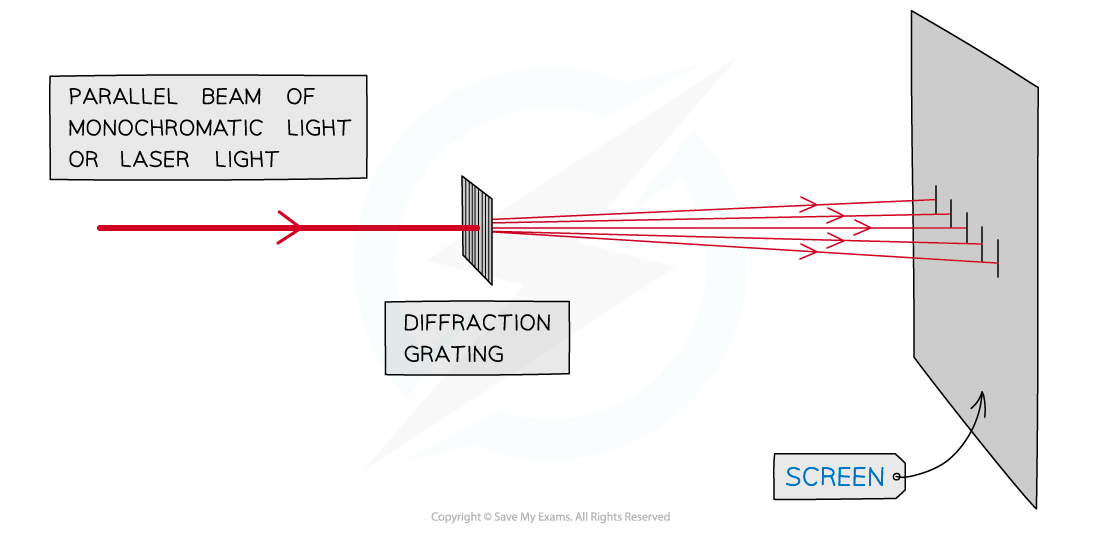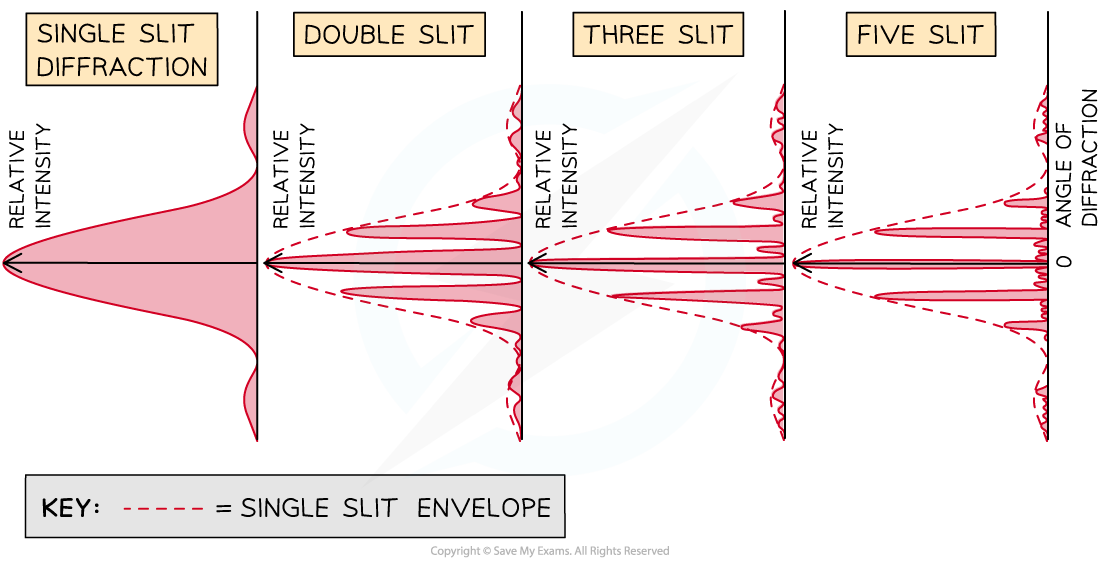- 翰林提供学术活动、国际课程、科研项目一站式留学背景提升服务!
- 400 888 0080
IB DP Physics: HL复习笔记9.3.3 Diffraction Grating Patterns
Diffraction Grating Patterns
- A diffraction grating is a plate consisting of a very large number of parallel, identical, close-spaced slits
- When monochromatic light is incident on a grating, a pattern of narrow bright fringes is produced on a screen

Diffraction grating with multiple slits, usually described in terms of 'slits per metre'
- The number of slits dictates both the interference and diffraction patterns which are seen
- On the screen a diffraction pattern is observed
- The interference pattern is a measure of the intensity of the light at different angles of diffraction away from the central maxima
- For a double slit arrangement this is shown in (9.3.2 Two-Slit Interference Patterns)
- On the diffraction pattern as the number of slits increases:
- Between the maxima, secondary maxima appear
- The central maxima and subsequent bright fringes become narrower

Diffraction patterns for light interfering through different numbers of slits
- When there are 3 slits, 1 secondary maxima can be seen between the primary maxima
- When there are 5 slits, 3 secondary maxima can be seen between the primary maxima
- Therefore, with N slits (when N > 2), there are (N − 2) secondary maxima
- Once the number of slits increases to N > 20:
- The primary maxima will become thinner and sharper (since slit width,
- The primary maxima will become thinner and sharper (since slit width,
